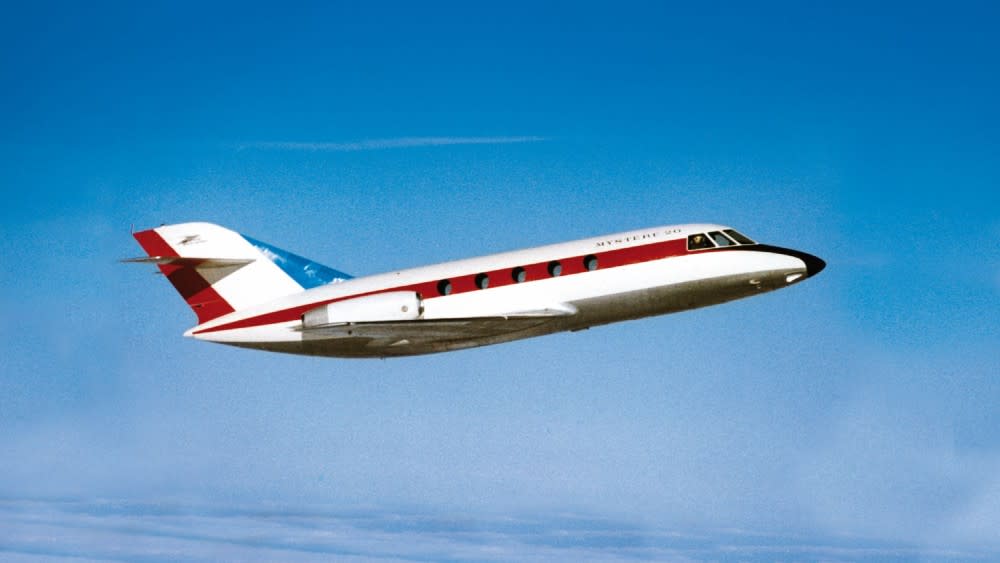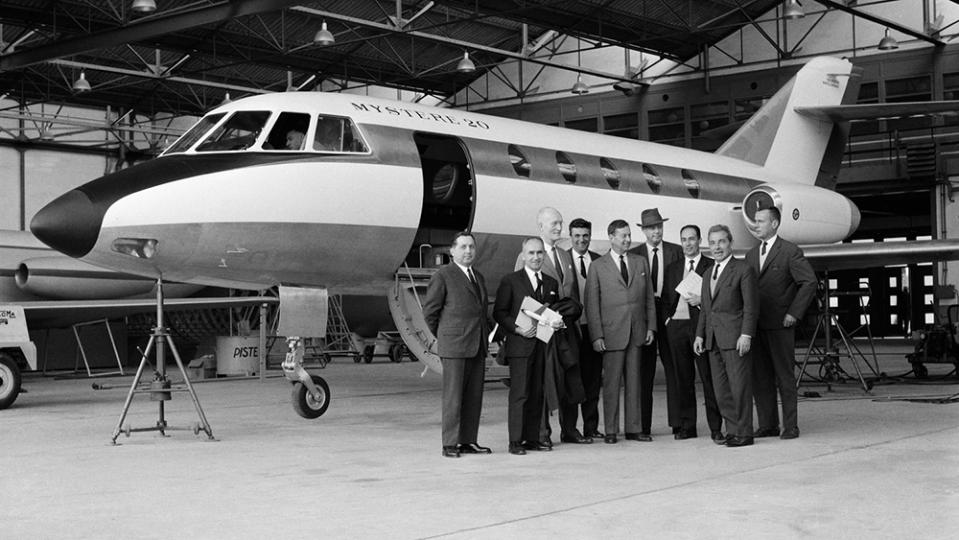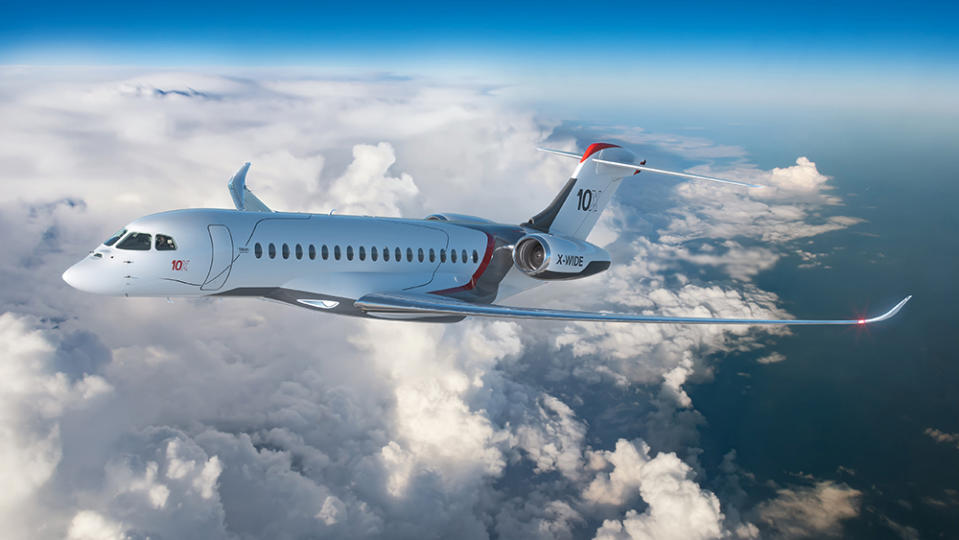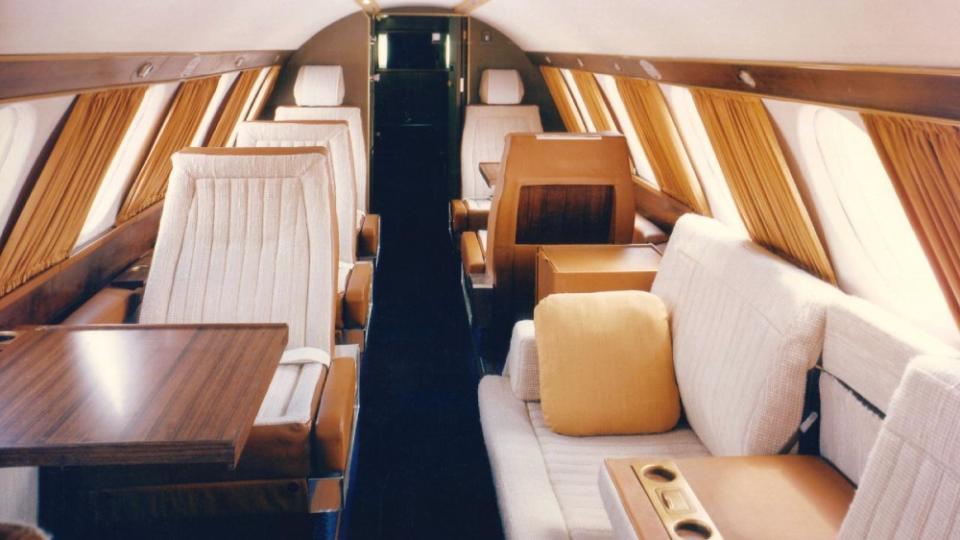How Dassault’s Falcon 20 Helped a New Era of Business Jets Take Flight

- Oops!Something went wrong.Please try again later.
“For an aircraft to fly well, it must be beautiful.” There’s something very French about that statement, and indeed, it came from Marcel Dassault, the aeronautics engineer behind France’s sleek Mirage fighter jets.
But 60 years ago today, around 5 p.m., Dassault would write a new chapter in civil aviation history.
More from Robb Report
The Most Popular Business Jet in the U.S. May Not Be What You Think
Will Protests Against Private Jets Accelerate Electric and Hydrogen Technologies?
Meet the Gulfstream G700, the Current King of Private Aviation
The first Mystère 20 took off from an airport in Bordeaux, marking the company’s entry into the fledgling business-jet market. Test pilots René Bigand and Jean Dilliare “gave it the gas,” as one historical account recalls, taking the aircraft that would be renamed the Falcon 20 for an inaugural one-hour flight.

Charles Lindbergh was at the airport earlier that day to inspect the new aircraft on behalf of Pan Am, the world’s largest commercial airline. Lindbergh wired Pan Am CEO Juan Trippe: “I’ve found our bird.” The airline ordered 40 units to establish Pan Am Business Jets for its executive jet operations.
It was the start of a new era in business jets. Brands like Lockheed and Sabreliner were well known in the 1960s, but the Mystère 20 (rebranded as the Falcon 20 to sound less French) would soon be going head to head with a startup called Learjet in a smaller category.
The Falcon 20 had a successful history both among entrepreneurs and businesses. In 1973, Fred Smith launched FedEx with a fleet of 33 Falcon 20s that were modified with a large cargo door. A decade later, the U.S. Coast Guard ordered 41 Falcon 20s, designated the HU-25, modified for search and rescue. Clients liked the features adopted from Dassault’s Mirage fighter jets. During its production run, the Falcon 20 inspired 27 model variations. Dassault built nearly 500 20-series aircraft.

Since this fairly inauspicious start, the Falcon brand has become one of the leaders in private aviation, going head to head with Gulfstream and Bombardier Aerospace in the larger business jet categories. More than 2,100 Falcons are operating in over 90 countries
The best-seller has been the Falcon 2000, an efficient business jet first flown in 1993 that has been continuously updated. Nearly 700 have been delivered since it went into production in 1995. The Falcon 900 has also been a popular model, with over 550 delivered.
The ultra-long-range Falcon 10X is the largest business jet in its fleet, with a range of 7,500 nautical miles. It is expected to enter service in 2025. The super midsized 6X is expected to enter service this year. It has a range of 5,500 nautical miles. The company says both aircraft have the largest cabin cross-sections in their respective classes.

Dassault has been able to adapt features from its Rafale fighter jets, including heads-up displays and wing configurations, to its new civilian aircraft. The airframer says the 6X will have its most advanced digital flight-control system to date. The 10X, which is in the early stages of assembly, will come with even more advanced systems and safety features, said the company.
Despite 60 years of growth, Dassault has been feeling political headwinds in the last year, mostly due to protests occurring in Europe over carbon output from commercial and business aviation. Sit-ins have taken place at dozens of private airports across the US and Europe, and a group of scientists last year assembled at Dassault’s headquarters outside of Paris to protest what they see as government inaction on climate change. The scientists flew paper airplanes over the company’s gates.
Best of Robb Report
Sign up for Robb Report's Newsletter. For the latest news, follow us on Facebook, Twitter, and Instagram.

